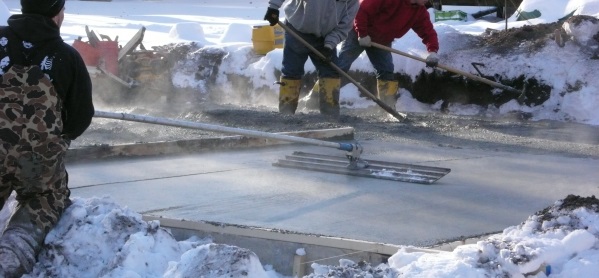Chaney News
January 31, 2019News, Concrete
Calcium Chloride Accelerators vs Non-Calcium Chloride Accelerators
Author: Madison Sloan

Which type of accelerators and when should they be used? Accelerators should be used when ambient temperature approaches freezing conditions, and when an increase in concrete strength is required at an early age. However, the main reason concrete contractors use accelerators is to reduce the set time of the concrete. During cold weather, it takes longer for concrete to reach initial set. The cold temperature delays the hydration process of the cement thus taking longer to gain strength or harden. Waiting on the concrete to set, increases the cost for the contractor to place the concrete and can increase frustration levels for the finishers. Using accelerators, in conjunction with good curing procedures, helps to protect the concrete from freezing. Studies have also shown that concrete strengths are often higher when accelerators have been used during placements.
The main difference between the two types of accelerators is the presence of water soluble chloride ions. These ions can hurt the steel reinforcement that has been embedded in some concrete structures. The chloride ions will stimulate the corrosion process within the steel and may eventually lead to a failure.
Calcium chloride accelerators are inexpensive and relatively easy to use. However, the bags of calcium flakes are usually mixed up in a bucket at the job site, and then poured into the concrete mixer and allowed to mix in the drum for a few minutes. The consistency of the calcium accelerator throughout the load may not be homogenous and the concrete may have “spongy” areas during finishing operations.
Although the American Concrete Institute 318-05, “Building Code Requirements for Structural Concrete”, allows the use of calcium chloride, your ready mix concrete producer can offer a simple solution for using accelerators. Either admixture can be introduced into your concrete during mixing procedures at the plant and in the mixer. This will save you time and reduce the risk of injury for all employees. Ultimately, the job specifications dictate which admixtures have been approved by the engineer of record, however; the ready mix producer would recommend using non-calcium chloride accelerators placed in each load during the batching process. This practice would save all parties time and money, reduce the risk of injury, and produce a quality product.









